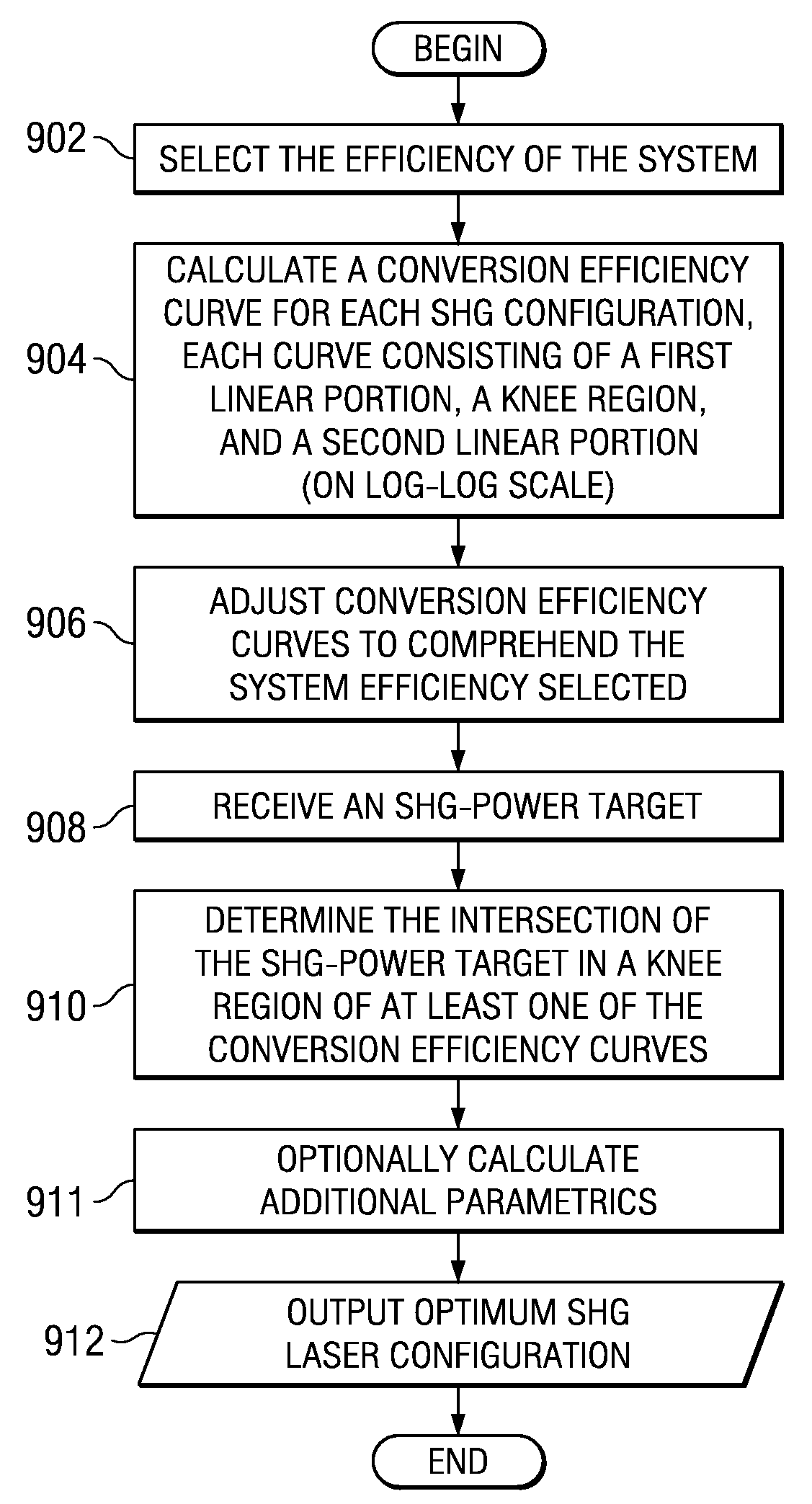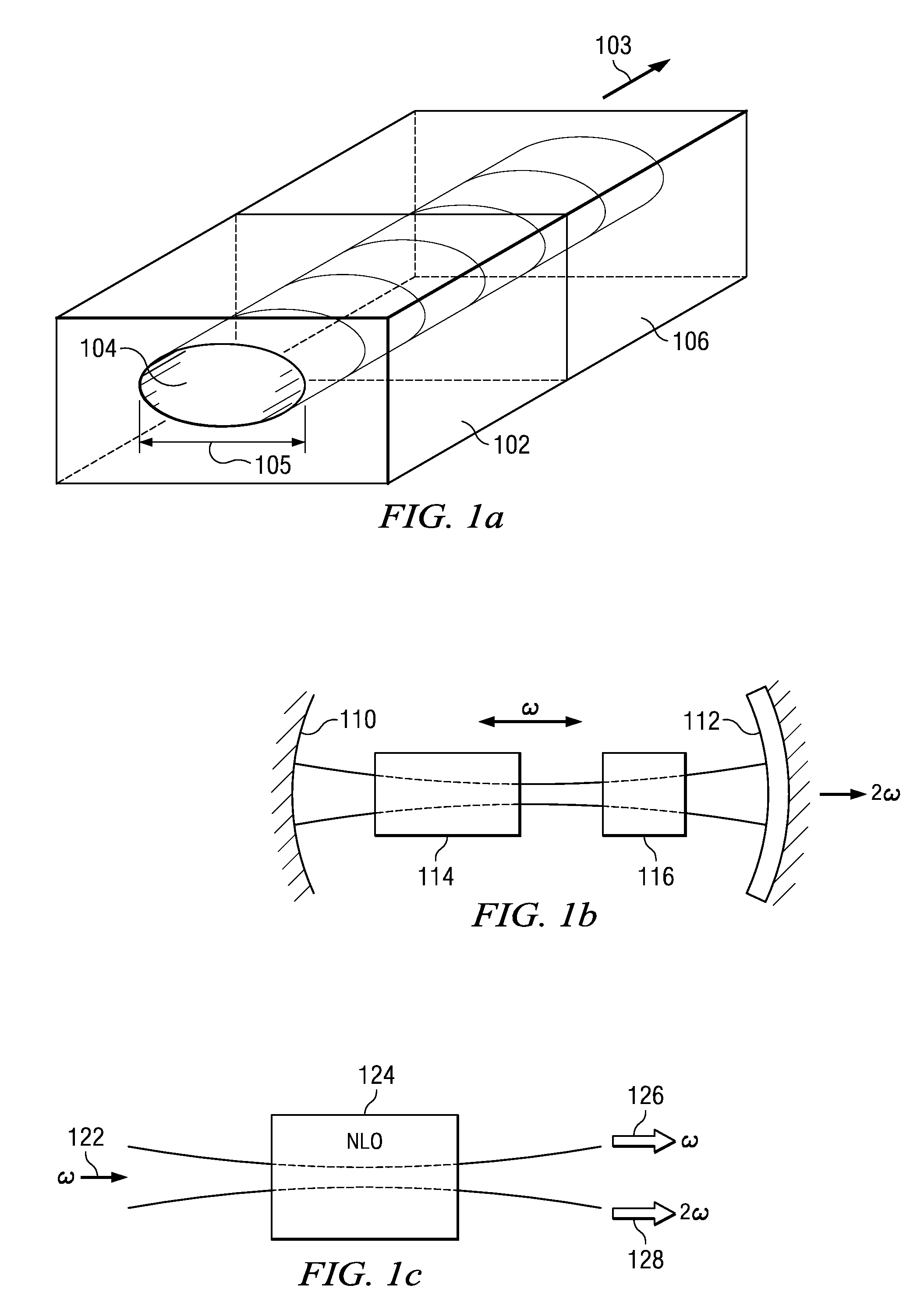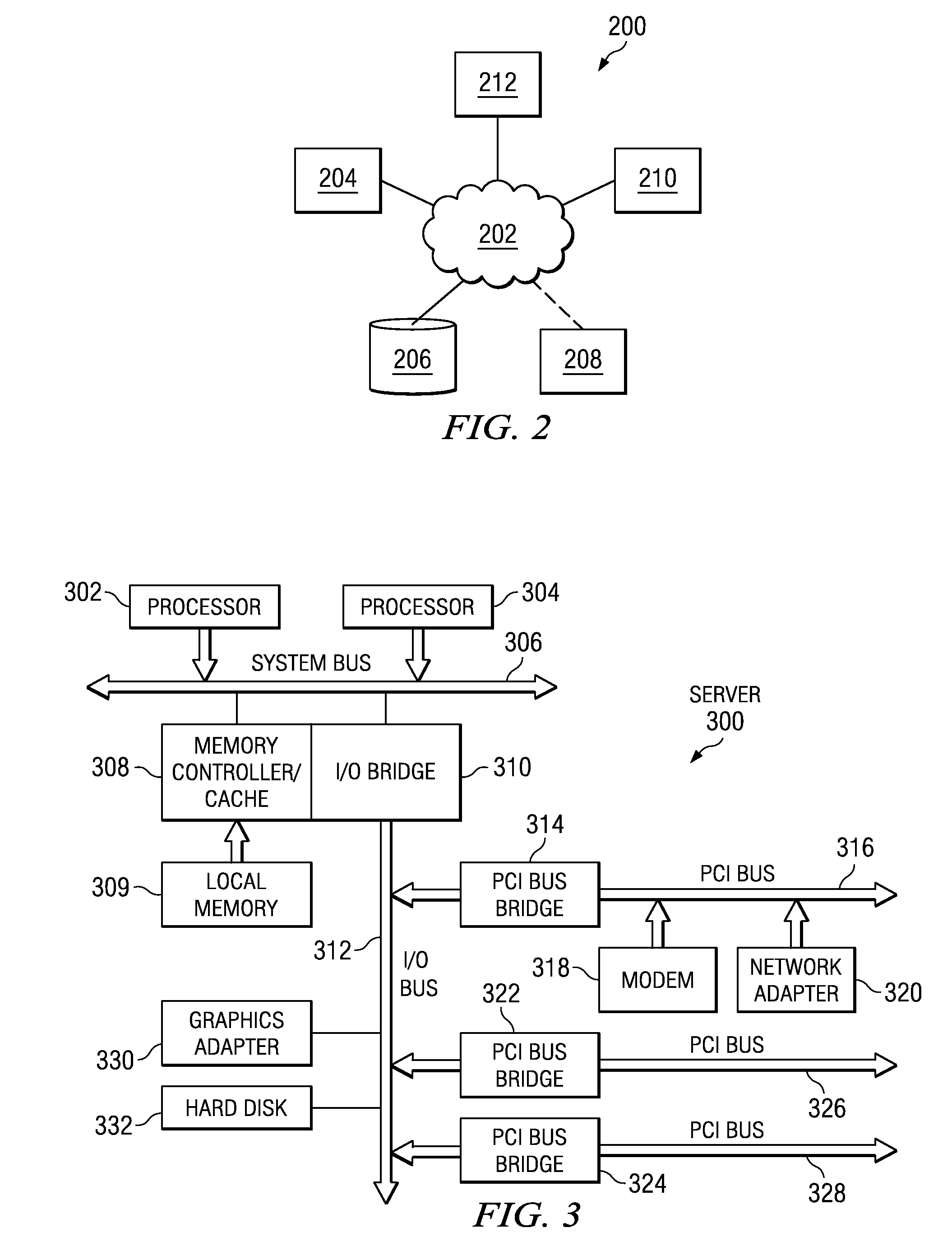Efficient Second Harmonic Generation (SHG) Laser Design
a laser design and efficient technology, applied in the field of semiconductor laser design, can solve the problems of inefficient fundamental level operation of laser systems to laser systems with more capacity, and more expensive materials, and achieve the desired shg power at inefficiently under-powered fundamental levels
- Summary
- Abstract
- Description
- Claims
- Application Information
AI Technical Summary
Benefits of technology
Problems solved by technology
Method used
Image
Examples
Embodiment Construction
[0026]The making and using of the illustrative embodiments are discussed in detail below. It should be appreciated, however, that an illustrative embodiment provides many applicable inventive concepts that can be embodied in a wide variety of specific contexts. The specific embodiments discussed are merely illustrative of specific ways to make and use the invention, and do not limit the scope of the invention.
[0027]The present invention will be described with respect to illustrative embodiments in a specific context, namely an example of a 3.5 W target SHG power for a green light or a blue light. The invention may also be applied, however, to additional embodiments, such as other target SHG powers and other frequencies of light.
[0028]In an application entailing a complex system, design phases often occur in parallel. Each sub-system of the design has a specification that defines its critical parameters, such as size, shape, inputs that are expected and outputs that each sub-system m...
PUM
 Login to View More
Login to View More Abstract
Description
Claims
Application Information
 Login to View More
Login to View More - R&D
- Intellectual Property
- Life Sciences
- Materials
- Tech Scout
- Unparalleled Data Quality
- Higher Quality Content
- 60% Fewer Hallucinations
Browse by: Latest US Patents, China's latest patents, Technical Efficacy Thesaurus, Application Domain, Technology Topic, Popular Technical Reports.
© 2025 PatSnap. All rights reserved.Legal|Privacy policy|Modern Slavery Act Transparency Statement|Sitemap|About US| Contact US: help@patsnap.com



